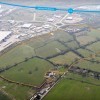Businesses are increasingly aware of their carbon emissions and how they might reduce them.
There are several ways but following the PAS2060 standard will provide your business with a step-by-step method of quantifying your carbon footprint.
Crowberry Consulting has experience in providing consultancy regarding carbon neutrality and the PAS2060 process. Managing director Becky Toal, explains how to get the basics right surrounding this topic.
Establishing baseline
Establishing your baseline is the first step in the carbon neutrality process. You must select a year’s worth of data to create your claim.
Emissions are categorised under Scope 1, 2 and 3.
Scope 1 emissions are in direct control of your organisation.
Scope 2 emissions are indirectly controlled by your organisation.
Scope 3 emissions are tricky, as these include the emissions within your supply chain.
Footprint quantification
Quantifying your emissions involves the use of primary activity data and the use of emissions factors from the DEFRA.
This categorises all emissions sources, providing the figures needed to convert your emissions into CO2 equivalents.
PAS2060 sets methodologies that are followable to ensure uncertainty is avoided, so that accurate and reproducible results are produced.
Carbon management plan
Creating your carbon management plan is straight forward, it is a working document of your journey towards carbon neutrality has developed.
This should include total tonnage of CO2, a statement of commitment to neutrality, a timescale for achievement, reduction targets, the means of achieving the above reduction, and the carbon offset strategy.
Offsetting options are globally available. They range in price (per tonne) so can accompany your organisation’s budget.
Enjoyed this? Read more from Becky Toal, Crowberry Consulting


















